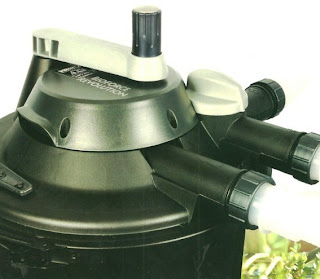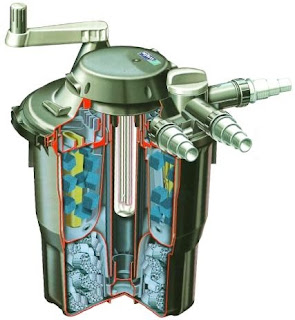It’s very important as a pond owner to be prepared for
winter, especially when the freezing weather arrives as it can cause big
problems if certain things are not prevented.
We always advise that you prepare in advance, that way you
are preventing problems as opposed to treating problems, as catching it early
can be a lot more beneficial.
First things first, remove any dead plants, during this time
of year aquatic plants start to die off, and it’s extremely important that any
rotting leaves or plants are removed, if not dealt with they can release
harmful gases into your pond which is bad for plants, fish and other aquatic
life.
If something has died off, then remove it. We also advise
cutting back any plants which have thrived during the spring and summer as this
will begin to die off as the sunlight is rarer and the cold sets it. Doing this
will mean less work when it happens as you have already removed the bulk of it.
Use a pond vacuum or net to remove any leaves from
surrounding trees and plants because if these are left in the pond then over
the winter period they will rot down too, turning into silt and sludge, holding
pollutants and releasing their own into the water, causing bad water quality.
To stop leaves and other debris getting into the pond in the
first place, we’d advise using a pond cover net over your pond, this will catch
everything before it gets into the water, making for easy removal.
Track The Temperature
Always keep a check on the temperature of your pond too, as
fish should not be fed at very low temperatures. This is because their
digestive system shuts down when it’s cold, so even if they do eat (which they
normally won’t) the food will sit in their stomach and rot down, causing
internal bacterial problems.
If food is uneaten and not removed, which is more likely the
case then this can pollute the pond, leading the fish disease, so either way we
advise to not feed once the temperature has gone below 5 degrees.
You can either remove your pump and filter from the pond, or
raise the pump up from the bottom of the pond, this stops your from taking
warmer water at the bottom and circulating it around, the fish prefer the
bottom due to this slightly higher temperature.
 Your Pond and Ice
Your Pond and Ice
Ice is something which can plague a pond during the winter,
especially the last few we have experienced. Ice will trap gases in your pond,
it will also prevent oxygen from getting into your pond water. If snow also
falls onto this ice then your pond will also have been blocked from light
entering, which means the plants you have left will die off.
Our best advice is to use a pond heater, they come in many
sizes, from 150 watt to 300 watts and more, they higher the wattage the more
efficient they will be at their job. They will keep a small area free from ice,
this means they gases will be able to escape and your fish will have oxygen in
their water to breathe!










